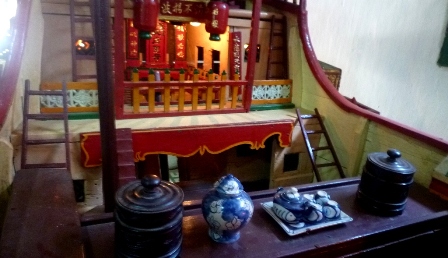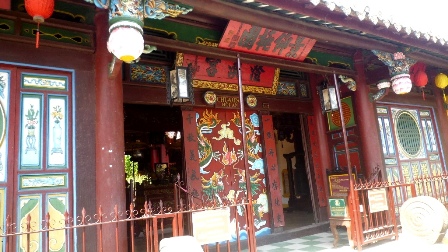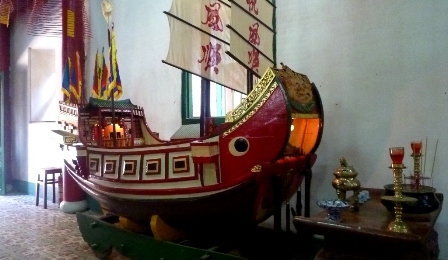'You need to have your phone when you are on holiday in case something like this happens,' says Mrs Callaby. 'But providers sting you when you make lots of calls.'
3 Don't draw cash on your credit card
Nearly every credit card will hit you with three charges for withdrawing cash. There will be the hidden foreign currency charge, a cash withdrawal charge that may be as high as 2.99 per cent (with American Express) and interest from the day you make the withdrawal, which could be more than 30%.
Overall, withdrawing £100 in foreign currency can cost you almost £106 with the most expensive cards such as MBNA, HSBC, First Direct and American Express - and you'll be charged interest from the day of the withdrawal. Once the interest is added, your bill could rise to more than £110.
The exception is Santander's Zero credit card, which has no foreign currency loading and doesn't charge a fee for cash withdrawals. Update (31 July): It will still charge a very high interest rate for drawing out money, as with all credit cards.
4 Beware of demon debit cards
You might expect your debit card to offer free withdrawals, but many charge a fee of up to £4.95 on £100. Most have a minimum fee, so it is better to draw out larger amounts rather than small ones. The most expensive include Royal Bank of Scotland/NatWest and Barclays, which charge up to £4.75 on a £100 withdrawal, according to Moneyfacts.
With Barclays, this includes a 'cash conversion' charge of 2.75 per cent and a 2 per cent 'cash transaction charge', minimum £1.50 and maximum £4.50.
But the real demon debit cards also charge between £1 and £1.50 every time you spend on them abroad. So if you pay for a gift costing £10 using your debit card, the bank will add this fee in addition to swiping its currency exchange fee. It's like paying 15 per cent commission on every transaction.
Use your debit card 20 times on holiday in shops and restaurants and you'll be hit by £20 to £30 in fees, in addition to the currency exchange charge.
The worst are Halifax, IF, Lloyds, RBS NatWest and Santander. The good guy is Nationwide, which does not charge for cash withdrawals within the EU for spending using its Flexaccount debit card (there is a 1 per cent currency exchange charge outside the EU).
You could consider pre-paid cards, but watch out for charges. You load the cards with money before you go and use them, as you would a debit or credit card. The best for foreign usage are from Caxton FX and FairFX.
These cards are available online and can be loaded with euros or dollars. They don't have any spending or foreign usage fees, but FairFX does charge - 1.50 or $2 each time you withdraw cash.
5 Don't let shops convert currency
Some shops, restaurants and cash machines in southern European countries will offer to convert your euro bill into sterling. Don't let them, because you will be given a very poor exchange rate.
If the outlet does it automatically and refuses to reverse the transaction, take a note of its details and tell your card issuer when you get home.
My bank blocked my card
Ben Jessel, 32, had his Halifax debit card blocked while on a holiday in the Mediterranean and had to rely on handouts from friends.
'The whole thing was embarrassing because I knew I had enough funds in my account,' says Ben, a management consultant from Farnborough, Hants. 'I now use a Caxton Global Traveller pre-paid card when I go on holiday, which I load before I go.
'I know it won't get blocked and it also has the advantage of no cash machine charges, which used to cost as much as £20 when I went on holiday.'
A spokesman for Halifax says: 'We recommend that people notify us before they go away and give us a 24-hour contact number, as well as taking a contact number for us.
'Anyone who does run into problems should contact us and let us know, so we can unblock the card with immediate effect.'
6 Tell your bank before you go
Banks are becoming increasingly cautious about overseas credit and debit card activity, so if you haven't told them about your travel plans before you go, your card could be stopped without warning. Even if you tell your bank in advance, you could run into problems.
'We hear of cases where people's cards are blocked, even when they have told their bank that they're heading off on holiday,' says Mark Bowerman, spokesman for the UK Cards Association.
'Before going away, make sure the bank has a 24-hour contact number for you and you have a 24-hour number for them so you can get in touch if you run into problems, and they can release the block on your card as quickly as possible.'
If you incur costs such as expensive taxi fares or phone bills when trying to reactivate your card, you should ask your bank for a refund. If it refuses, contact the independent Financial Ombudsman Service at www.financial-ombudsman.org.uk or by calling 0800 0234 567.
You can download a free online guide offering advice to people using debit and credit cards abroad this summer from the website www.theukcardsassociation.org.uk
7 Fill your petrol tank
Car hire small print can be full of nasty surprises. Hire car drivers usually need to return the car with a full tank of fuel or risk the hire firm charging well over the odds to fill it up themselves.
You may be offered the opportunity to use the full tank of fuel that comes with the car and return it empty for an extra fee - but this can still cost you nearly twice as much as if you were to fill it up yourself.
As you leave the airport, keep your eyes open for a nearby petrol station you can use on your return.
8 Watch for car cover scams
Car rental companies charge an excess when drivers have an accident, which can be as steep as £1,000. They will offer to let you lower the excess by paying an extra charge, but this can substantially bump up your overall bill.
U.S. car hire firms routinely target jet-lagged Brits with offers of extra insurance, so make sure you are not buying cover you already have. The website www.dailyexcess.com provides insurance to protect motorists from steep excess charges when driving abroad.
For £4.75 a day, the site enables you to buy cover against excess charges worldwide, whenever and wherever you rent a car for trips of ten days or fewer.
Policies include damage to windows, tyres, the undercarriage and roof, which tend to be excluded from most alternative policies. If you are taking your own car overseas, talk to your insurer to find out the cover your policy offers for driving abroad.
Some will cover you for driving abroad for 90 days and others for just a few. Get some international breakdown cover, too, so you don't end up stranded at the roadside.
We were stung for £165 by hire excess
Retired couple Elaine, 65, and Frank Hodsoll, 67, were shocked to be asked to pay an extra $285 Australian dollars, equivalent to £165, to reduce the excess on their hire car.
The Hodsolls, from Canvey Island, Essex, had paid A$475 (£275) to hire a car from Avis for nine days while on holiday in Australia, and found out only on their arrival about the extra charge.
'In Adelaide we were told the excess would be A$3,000 and to reduce this to A$300 we would have to pay A$284.66,' says Mrs Hodsoll.
'The original confirmation only stated an excess would be charged in the event of any damage - it did not quote an amount. We paid, as we were worried that in the event of any damage we would be unable to pay such a large excess.'
Nick Mountfield, head of marketing at Avis UK, says: 'Our call centre tells customers about the maximum excess that will apply in the event of any damage. We also clearly inform the customer that they may choose to pay locally to reduce the excess.
'Our call centre staff have access to the local fees and can provide this on request. We could offer rentals with no excess, but the cost of damage would need to be factored into the price. This would put up prices for everyone.'
9 Avoid mobile phone shock
A few calls made and received while you're abroad can result in an eye-watering mobile phone bill when you get home. O2, for example, charges a steep £1.37 a minute to make a call home if you are on holiday in the US, and £1.03 a minute to receive a call.
T-Mobile charges £1.20 a minute to receive and make calls from the US. Charges in Europe are lower and will fall further on July 1, when the cost in EU member states will be capped at 39 cents (32p) a minute to make a call and 15 cents (12p) a minute to receive a call.
Watch out if you use your mobile to access the internet. Orange charges £8 a megabyte (MB) downloaded if you're outside Europe; T-Mobile charges £7.50 a MB.
Consider a bolt-on deal to cut costs. For example, with T-Mobile's Euro Boosters bolt-on, which costs £5 a month, you text EURO5 to the number 879, and you can make up to 17 minutes of calls, receive up to 39 minutes of calls or send up to 68 texts to European countries including holiday hotspots Greece, Cyprus, Spain and Portugal. Other networks have similar deals.
But the best way to keep costs down is to text instead - these usually cost only around 11p to send from Europe and between 25p and 40p from farther a field, and are free to receive.
10 Check your insurance
Cheapest isn't necessarily the best when buying travel insurance. Insurers can also wriggle out of paying claims by saying that you didn't tell them some relevant information up front, such as if a member of your party - or even a close relative - is taking medication.
Before buying insurance, always examine the small print so you know your cover limits. Your cancellation cover, for example, if you have booked your holiday independently, should be enough to include your flights as well as other expenses such as car hire and accommodation.
If you are taking cash with you, make sure you have cover for this and that you are protected in the event that your baggage is lost or stolen. You should look for a minimum of £1m personal liability cover and £2m medical cover. Always make sure there is a travel delay and abandonment section included in the cover.
Sometimes, cheap insurance policies won't include this, leaving you vulnerable if your flight is delayed for such a length of time that you have to cancel your holiday. In the event that you do need to make a claim, keep careful records to show your insurer everything you have spent as a result.
Things that can help support a claim include receipts for accommodation, car hire and food, as well as a confirmation letter from the airline if your flight is delayed.



















.jpg)




.jpg)





